Observations on Final States in Interactions (2015)
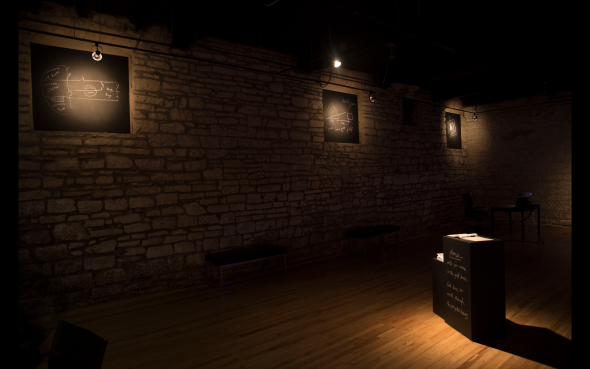 I interviewed four experimental physicists from Fermi National Accelerator Laboratory about their daily interactions with neutrinos, their own experiences of role and identity, and their perceptions of me as a person. The result is four different video installation “systems,†based on those interviews, the detectors, and the four possible identities of neutrinos. Grounding the work is a conversation with David Galin, an author and researcher of the concept of ‘self.’ Within “Observations of Final States in Interactions,†I explore parallels between neutrinos and human concepts of self, the performance of science and scientific research, and what it means for us all to be mutually entangled.
I interviewed four experimental physicists from Fermi National Accelerator Laboratory about their daily interactions with neutrinos, their own experiences of role and identity, and their perceptions of me as a person. The result is four different video installation “systems,†based on those interviews, the detectors, and the four possible identities of neutrinos. Grounding the work is a conversation with David Galin, an author and researcher of the concept of ‘self.’ Within “Observations of Final States in Interactions,†I explore parallels between neutrinos and human concepts of self, the performance of science and scientific research, and what it means for us all to be mutually entangled.
Neutrinos are one of most ubiquitous subatomic particles. Beaming through the empty space in atoms, they are very difficult to detect, defined primarily by the particle they happen to bump into. There are three, possible four, types of neutrinos: Muon, Electron, Tau, and the elusive Sterile, or non-interacting, neutrino.
At Fermilab in Batavia, Illinois, there are four large detectors built to examine neutrino oscillations and interactions: MINOS, MINERvA, NOvA, and MicroBooNE. Each detector looks at different aspects of neutrino interactions and identities: at the heart of the research lie some of the bigger questions for the universe. Why it is made up of matter, for instance. “Observations of Final States in Interactions†is exactly what its title suggests: a series of observations, a drawing of parallels between methods of inquiry, a look at systems of knowing and understanding. It seeks not to answer the profoundly large questions, but only to point out commonalities. Big thanks to Ross Stanton Jordan for curation, as well as Kate Zeller and Georgia Schwender for facilitation.
Observations on Final States in Interactions (Exhibition Photos) from Meghan Moe Beitiks on Vimeo.
Detector Systems (MINOS: Muon, MINERvA: (Tau), NOvA: Electron ) (2015) Video (8:30 mins), projectors, computer speakers, lamps, painted desks, chalk. Featuring interviews with Fermilab Physicists Bill Lee, Mateus Carneiro da silva, Sam Zeller, and Zarko Pavlovic.
MicroBooNE: (Sterile) System (2015): (Video 3:11 mins). Featuring footage of Fermilab Physicist Sam Zeller, and an interview with David Galin, author of “Self, Person and I†in Buddhism and Science: Breaking New Ground.
Dry Erase System (2015): adjacent to MicroBooNE, re-imaginings of Sam-Zellers drawings, infusing descriptions of neutrino research with concepts of “self,†quotes from Galin, Fermi Physicist Bill Lee, Karen Barad.
Chalkboard System (2015): Chalkboard drawings and calculations used in neutrino research. Materials: paint, chalk.
Intra-active Hitmap (2014): Paper, 37†tall, 13.3’ long. Large-scale reimagining of an actual neutrino interaction hitmap from Fermilab. A reflection on the work of the artist and the physicists and the resulting “tracks†of that work.
PRESS:
“It doesn’t take long for visitors to also feel like they are part of the exhibit: neutrinos constantly oscillating and changing.”– Downtown Auroran
“It is easy to become overwhelmed by the layers of Beitiks’ work. However, if approached with the understanding of one or two clear elements, the depth of the exhibit surfaces. Each aspect feeds into the next and the details become clear in how they interact with one another. A significant aspect in this exhibit is the way in which interaction unfolds. It reflects both her process of exploring neutrinos, the physicists who interact with them, and Beitiks’ own interactions with the physicists in their work environment. Through the audio clips and the multiple ways in which the clips stem into other ideas (that then interact with each other) she is exploring the process of how art and science can work together and separately.” — Jorie Senese, Water Street Studios Blog
UPDATE:
The Intra-Active Hitmap (2014) was displayed at Fermi National Accelerator Laboratory for several months following this exhibition (2015/2016).
MicroBooNE System from Meghan Moe Beitiks on Vimeo.
Detector Systems from Meghan Moe Beitiks on Vimeo.
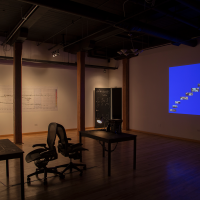
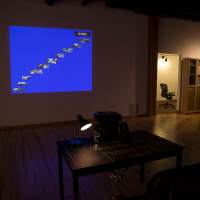
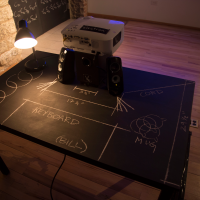
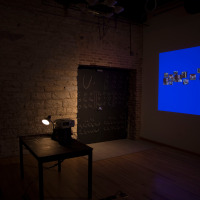
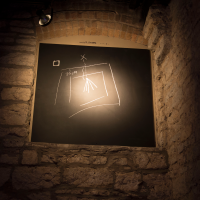
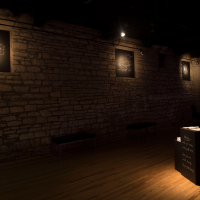
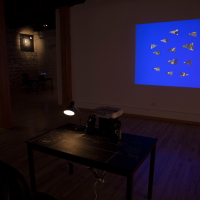
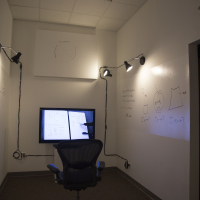
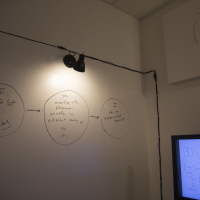
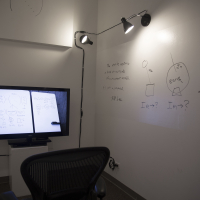
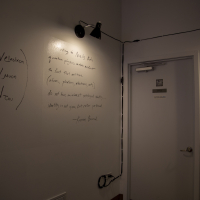
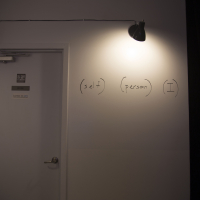
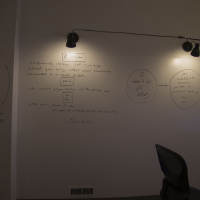
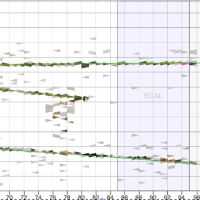
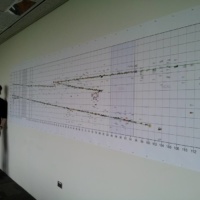
Leave a Reply